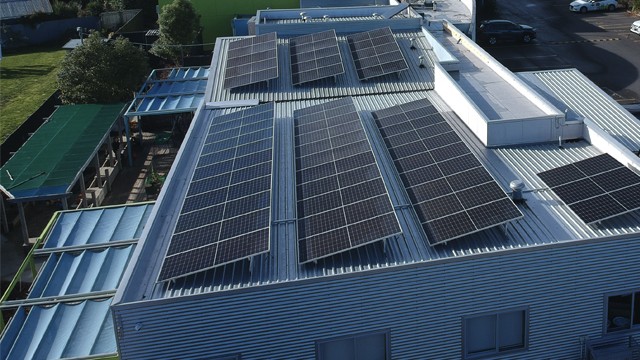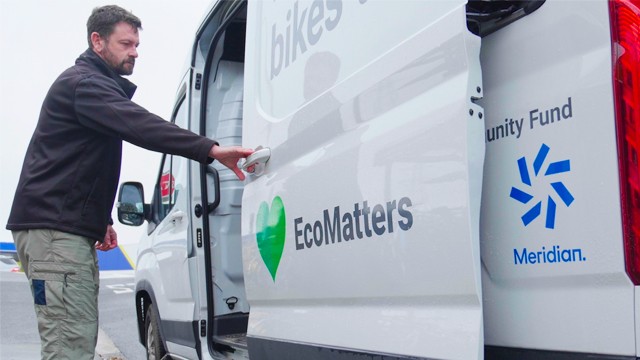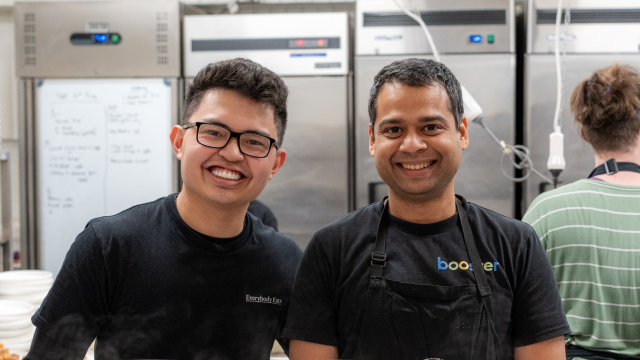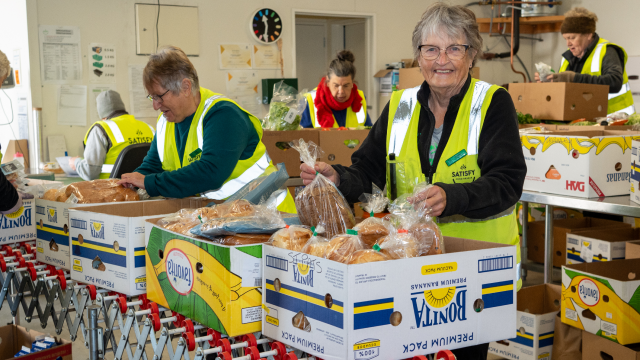Ngā Manu Nature Reserve preserves one of the largest remaining coastal lowland swamp forests on the Kāpiti Coast. The 14-hecatre reserve is a purpose-built sanctuary for native birds and other taonga species, with the charity’s main focus on education, conservation and preservation of Aotearoa’s native flora and fauna.
Funding from Meridian’s Community Decarbonisation Fund was used to install solar panels to the visitor centre, education centre and the nocturnal kiwi house. It’s just one of 14 community organisations supported by the fund in 2023.
Powering conservation at Ngā Manu Nature Reserve
Powering conservation at Ngā Manu Nature Reserve transcript
Upbeat music plays: Words appear on the screen “Meridian Community Decarbonisation Fund”. On screen is The Ngā Manu Nature Reserve logo with a fantail, and the Certified Renewable Electricity Generation logo with a turbine. Also on screen are the words “See meridian.co.nz/certified”.
See Anna McKenzie Hawea – General Manager – Ngā Manu Nature Reserve standing outside in nature.
Anna speak to the camera: At Ngā Manu Nature Reserve we’ve been connecting people with nature for over 50 years.
Anna continues to speak in the background while the scenes change on screen: We’re here on the Kapiti Coast with this beautiful remnant of low land swamp forest which we’re here to protect and conserve. But we also do a number of breed for release programs nationally and regionally in partnership with the Department of Conservation.
Visual: Aerial view of the reserve with bush, trees and ponds. Closer aerial view of the reserve buildings surrounded by trees, a large pond, bridge, and monuments.
Ngā manu worker cleaning out an animal cage and worker sorting through compost outside while a duck closely watches on.
Audio: So we currently breed Kiwi, Kaka, Kea and the Kakariki as well.
We also have raised over a thousand Tuatara at Ngā Manu since we started. And we also breed for release a number of rare skinks and geckos.
Visual: Close up of the front of a kiwi at night. Close up of a Kaka sitting on a branch.
Two keas sitting on a rope. One turns to look at the camera. Close up of a kakariki on a branch pecking at a nut.
Wayfaring signs showing the way to Tuatara, Kiwi House and Bushwalk. In the background 2 walkers with packs are heading towards the walk.
Close up of a Tuatara walking along rocks in a display. See a gecko’s face appear through some foliage in a display and the back of another gecko hiding in the tree.
Audio – Anna speaks: So, education’s always been a really important part of what we do. We welcome about 3000 students to the reserve every year.
Visual: Many school students standing outside a building at Ngā Manu reserve, listening to members of the team talk. Close up of ducks walking around the feet of school students. Students watch an employee feed eels in a pond and talks to them.
Audio from Ngā Manu employee: These are a migratory species; the New Zealand longfin migrates to breed, and these guys breed just off the east coast of Tonga. Now that’s two and a half to 3000 kilometers away from New Zealand, and this takes them sort of 6 to 8 months to swim over there. Non stop swimming, they do not sleep or eat during this time.
Visual: Children listening to the Nga Manu employee talking. Close up of many eels swimming in a pond. A man in gumboots is feeding meat to many eels swimming in the pond. The eels are coming out of the water to grab the food.
Anna McKenzie Hawea is standing outside at the reserve. Anna says to camera: I’d like to say a huge thank you to the Community Decarb fund. Without their support and the support of the Meridian Certified customers, we wouldn’t have been able to put solar panels on three of our buildings and we wouldn’t have been able to purchase an electric vehicle.
Visual: Aerial scene of a building at the reserve surrounded by trees. The building is covered with solar panels on the roof. Aerial view of another building at the reserve with solar panels on the roof.
EV ute drives in to the reserve driveway. The EV ute is branded with pictures of native plants and a kiwi. The vehicle also says Ngā Manu Nature reserve on the door.
Audio: Anna speaks while the scenes change. So, the electric vehicle is used as a wildlife ambulance to transport birds and reptiles. It also means when we go to release some of the animals that we’ve been breeding, we can transport them to the release site and release them into the wild which is fantastic.
Visual: Car door opens and has the words “This EV has been generously funded by Meridian” the logo and Nikau Foundation and their logo.
Ngā Manu employees exit the vehicle. Close up of Anna inside the vehicle driving. Aerial view of the N Ngā Manu EV vehicle travelling on a road outside the reserve.
Anna speaks: With regards to the solar panels, that has helped us get much closer to our zero carbon goal. It also means that we can dramatically reduce our electricity bills and with the money we are saving from that, we can put that back into the conservation projects that are at the core of our Kaupapa.
Visual: Aerial view of a building at Ngā Manu with solar panels on the roof. The building is surrounded by trees. See another building at the reserve with solar panels on the roof.
Aerial video of the reserve buildings around a large pond with many trees and green spaces panning out to show more of the reserve. Two great ducks sitting on the edge of a pond looking across the pond.
Upbeat music plays and the video ends with a teal and navy screen. The words Meridian and The Power to Make a difference appear on screen. Meridian company turbine logo spinning on screen.
The fund is all thanks to our partnership with our Certified Renewable Energy (Certified) customers.
Certified enables Meridian’s business customers to match the amount of electricity they use, with an equivalent amount of electricity put into the national grid from one of our hydro stations or wind farms – which have been independently verified as producing 100% renewable electricity.
All of the net proceeds from Certified are used to support electrification projects across Aotearoa. Together, with our Certified customers, we’ve funded more than $1 million in grassroots community projects that reduce carbon emissions and provide a tangible positive impact for many community groups.
More decarbonisation projects
Need some inspiration? Check out some of the projects we've funded to date.

Building a brighter future for Waipuna’s Community Centre
Waipuna has installed 60 solar panels on its Community Youth and Child Services building.

Helping EcoMatters live up to its low carbon mission
EcoMatters is driving sustainability forward by swapping their diesel van out for an electric one.

New EV van helps Everybody Eats fight food waste and feed those in need
Our Community Decarbonisation Fund provided funding for new EV van for Everybody Eats to support its food collection service.

Electrifying food rescue for Satisfy
Through our Community Decarbonisation Fund, Satisfy Food Rescue received funding for a new EV van to support food pick-ups and deliveries.